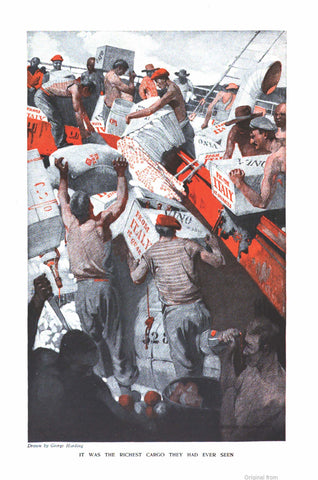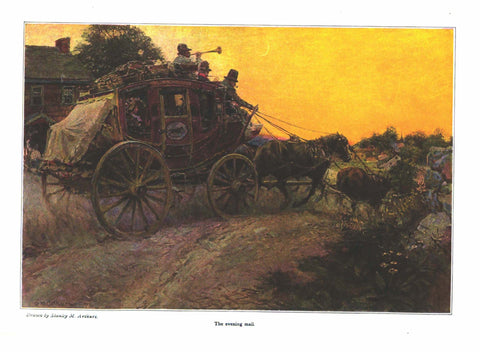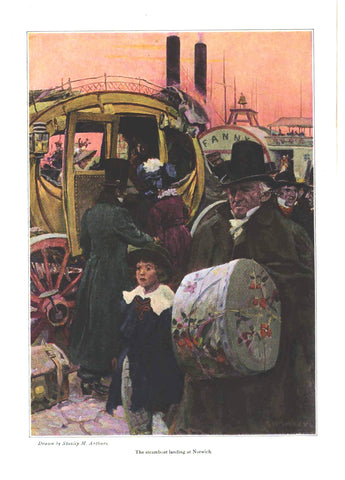Howard Pyle illustration from "King Arthur and his Knights" (1903): beautifully framed antique
$225.00
Illustration for The Story of King Arthur and his Knights
by Howard Pyle
New York. Charles Scribner's Sons. 1903.
IMAGE INFORMATION
Image Size: H 9.125” x W 6.625”
Matted & Framed: H 17.125” x W 10.625”
Framed Price: $225.00
Whiteglove packaging and shipping approximately $25.00
HP was a prolific illustrator of stories published in leading national magazines from 1878 until his death in 1911. He is not as well-known as a book illustrator, but during his career, he illustrated more than 150 books. More surprising, the bulk of his pictures were in books he wrote himself.
HP launched this part his career with The Merry Adventures of Robin Hood, which Scribner published in 1883. His greatest work was a four-volume set he produced between 1903 and 1910, which contained his illustrated interpretation of the Arthurian legend. No longer writing/drawing for children, the mature author/artist aimed to instruct young adults and adults in the lessons of life. That he appreciated the monumental nature of the project becomes clear in the comment he used to close book four. It reads in part:
And these books are four in number: first, there is the Book of King Arthur; then there is the Book of the Champions of the Round Table; then there is the Book of Sir Launcelot and his companions, and now there is this Book of the Grail and the Passing of Arthur, and this book is the last. For those books comprise a history of all this time ; for though there be many things left untold in them, yet those things are of small consequence.
The illustration of Sir Kay at “ye tournament” is from the first book in the set. Pyle made it a magnet for the eye by following the rules he set out for his students. “Project your mind into your subject,” he told them, “until you actually live in it.” “Scrutinize the model sharply to find the proportions–how the weight is supported, how each joint is functioning . . . Look for the color and tone and texture.” Make the action come alive, he told them, by contrasting light with dark on diagonal lines. Finally, he told his students fill their pages with details so everywhere in the scene the viewer would find something interesting to look at.








